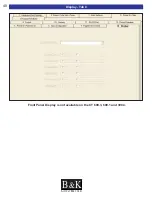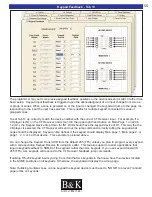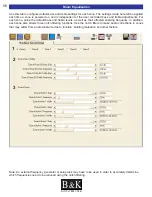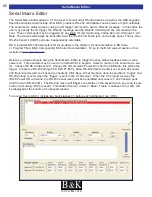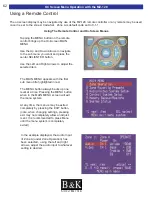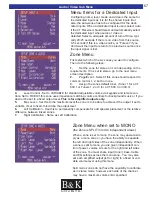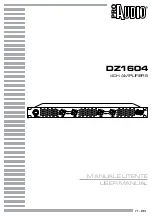
B K
&
S
B
IMPLY
ETTER!
57
Room Equalization
2. Bass and Treble Adjustments
The bass and treble adjustments are used to boost or reduce the levels above or below a certain frequency.
Choose frequency the shelving equalization would begin. For bass equalization, frequency adjustments may
be made from 20 Hz to 300Hz. For treble equalization, frequency adjustments may be made from 2kHz to 16
kHz. Then choose the reduction or gain in level for the shelf of frequencies to be adjusted. The gain may be
adjusted from -12 dB to +12 dB for both the bass and treble frequencies.
Note: Room Equalization and Notch Filtering parameters are applied globally regardless of the
selected user EQ (auto-level or loudness EQ).
3. Notch Filtering
Notch filtering is used to correct for the enhanced lower frequencies due to resonant wave forms. When lower
frequencies become in phase, they add to increase the volume (amplitude) in dB of the waveform. The inten-
tion of the Notch Filter is to decrease the volume (amplitude) in dB of these enhanced lower frequencies.
Typically a room will have 3 large peaks due to the distance between the front/back walls, left/right walls and
the floor/ceiling. B&K provides 3 notch filters to address each of these peaks.
Zone Notch Gain
The level of decrease in dB level for the notch frequency and width.
Zone Notch Frequency
The frequency that will be affected at the lowest point of the notch slope.
Zone Notch Width
The width of the frequencies that will be affected around the notch frequency. The more decreased
the notch width, the less frequencies that will be affected around the notch frequency. The more
increased the notch width, the more frequencies that will be affected around the notch frequency.
Below is a graph showing a before and after example of notch filtering. The notch filtering makes the room
response in the lower end of the frequency spectrum more linear due to decreasing the emphasized frequen-
cies.
1. Selecting a Zone
Since a CT600.3/600.1 has six hardware zones, BK Suite will display a zone button corresponding to each of
the six zones. (If you are programming a CT300.3, three zone buttons appear). Select the zone you wish to
adjust the settings of.






